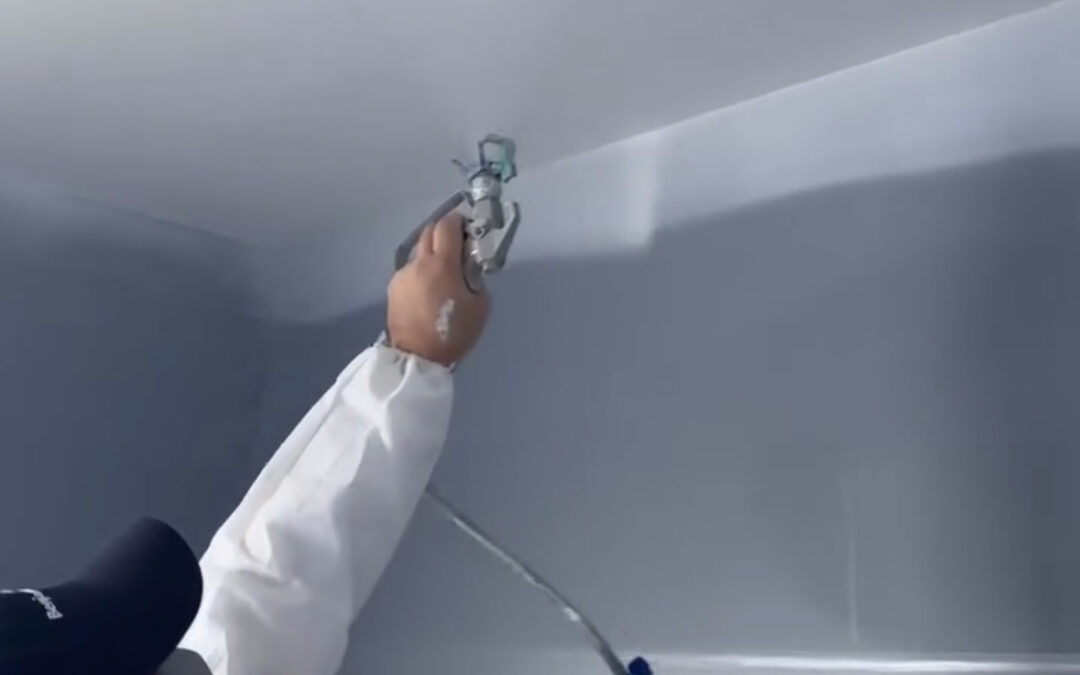When undertaking an Interior Painting Service, one of the most critical yet often overlooked steps is applying a high-quality primer. Many homeowners and even some DIY painters underestimate its significance, rushing directly to paint without this crucial base. Primer acts as the foundation for the entire painting process, ensuring durability, adhesion, and a flawless finish. Skipping primer can lead to uneven color, peeling, or premature wear, compromising both aesthetics and longevity.
The Role of Primer in Interior Painting
Primer is more than just a preparatory coat. Its primary functions include:
- Sealing Porous Surfaces – Drywall, plaster, and new wood can absorb paint unevenly. Primer creates a uniform surface, preventing blotchy finishes.
- Enhancing Adhesion – Paint adheres better to a primed surface, reducing the risk of peeling, cracking, or chipping over time.
- Blocking Stains and Odors – Watermarks, smoke, or even pet odors can bleed through paint. Specialized primers seal these blemishes and maintain a clean finish.
- Improving Paint Coverage – Primed walls often require fewer paint coats, saving time, effort, and product costs.
- Ensuring Color Accuracy – A primer provides a neutral base, allowing true paint colors to shine without interference from underlying surfaces.
Types of Primer for Interior Surfaces
Choosing the right primer depends on the surface type and painting goals. Some commonly used primers include:
- Latex Primer: Ideal for most interior walls, offering easy cleanup and low odor.
- Oil-Based Primer: Best for sealing stains and providing superior adhesion on tricky surfaces.
- Shellac Primer: Excellent for covering severe stains, smoke damage, or strong odors.
- Bonding Primer: Designed for slick surfaces like tiles or glossy wood that normally resist paint.
Each primer has specific strengths, and selecting the correct type can dramatically influence the final result of an Interior Painting Service.
Surface Preparation Before Priming
Even the best primer will underperform if the surface isn’t prepared properly. Steps to ensure readiness include:
- Cleaning Walls: Remove dirt, grease, and dust to prevent adhesion problems.
- Repairing Imperfections: Fill cracks, holes, and dents for a smooth finish.
- Sanding Rough Areas: Sanding creates a slightly textured surface, allowing primer to grip better.
- Taping and Covering: Protect baseboards, trim, and fixtures to avoid accidental primer stains.
Proper preparation ensures the primer can perform at its best, enhancing the overall quality of the painting work.
Benefits of Using Primer
Incorporating primer into an Interior Painting Service provides several tangible advantages:
- Longevity: Painted surfaces last longer with reduced risk of peeling or flaking.
- Professional Finish: Achieves smooth, uniform coverage, free from streaks or patches.
- Cost Efficiency: Reduces the number of paint coats needed, lowering material usage and labor time.
- Stain Resistance: Prevents stubborn stains from seeping through the final paint layer.
- Surface Flexibility: Helps new or repaired walls maintain integrity under changing humidity or temperature conditions.
These benefits not only improve aesthetics but also protect the structural integrity of interior surfaces over time.
Common Misconceptions About Primer
Despite its importance, a primer is sometimes misunderstood:
“Primer is optional for new paint.” Even fresh drywall or plaster can benefit from primer, ensuring uniform paint absorption.
“All primers are the same.” Different surfaces and stains require specific primers for optimal results.
“Primer adds extra work and cost.” While it is an additional step, it reduces paint coats and touch-ups, saving resources in the long run.
Clarifying these points helps homeowners and professionals make informed decisions about their painting projects.
Expert Tips for Effective Priming
- Apply evenly: Use brushes for corners and rollers for large surfaces to avoid streaks.
- Allow Proper Drying: Follow the recommended drying time before painting to ensure proper adhesion.
- Use High-Quality Tools: Low-quality brushes or rollers can leave marks in the primer coat.
- Layer if Needed: For heavily stained or porous walls, multiple primer coats may be necessary.
- Match Primer to Paint: Choose a primer that complements the type of paint being applied (latex or oil-based).
Following these practices ensures a smooth, professional finish that stands the test of time.
When Primer is Necessary
Some scenarios where primer is non-negotiable include:
- New Construction: Drywall and bare wood surfaces need a sealant base.
- Dark to Light Color Transitions: Prevents the old color from influencing the new paint.
- Stained Walls: Covers smoke, water damage, or crayon marks effectively.
- High-Humidity Areas: Bathrooms and kitchens benefit from primer that resists mildew and moisture.
In these situations, skipping the primer can compromise both appearance and durability.
Environmental and Health Considerations
Modern primers come in low-VOC and eco-friendly formulations, making them safer for indoor air quality. Using a primer with low chemical emissions ensures a healthier environment while maintaining a professional-quality finish.
Why Choose Fitch Painting?
At Fitch Painting, we prioritize meticulous preparation and high-quality materials. Our approach ensures every wall is primed to perfection, creating a solid foundation for stunning, long-lasting results. When you choose Fitch Painting, you choose excellence, precision, and walls that truly stand the test of time.

